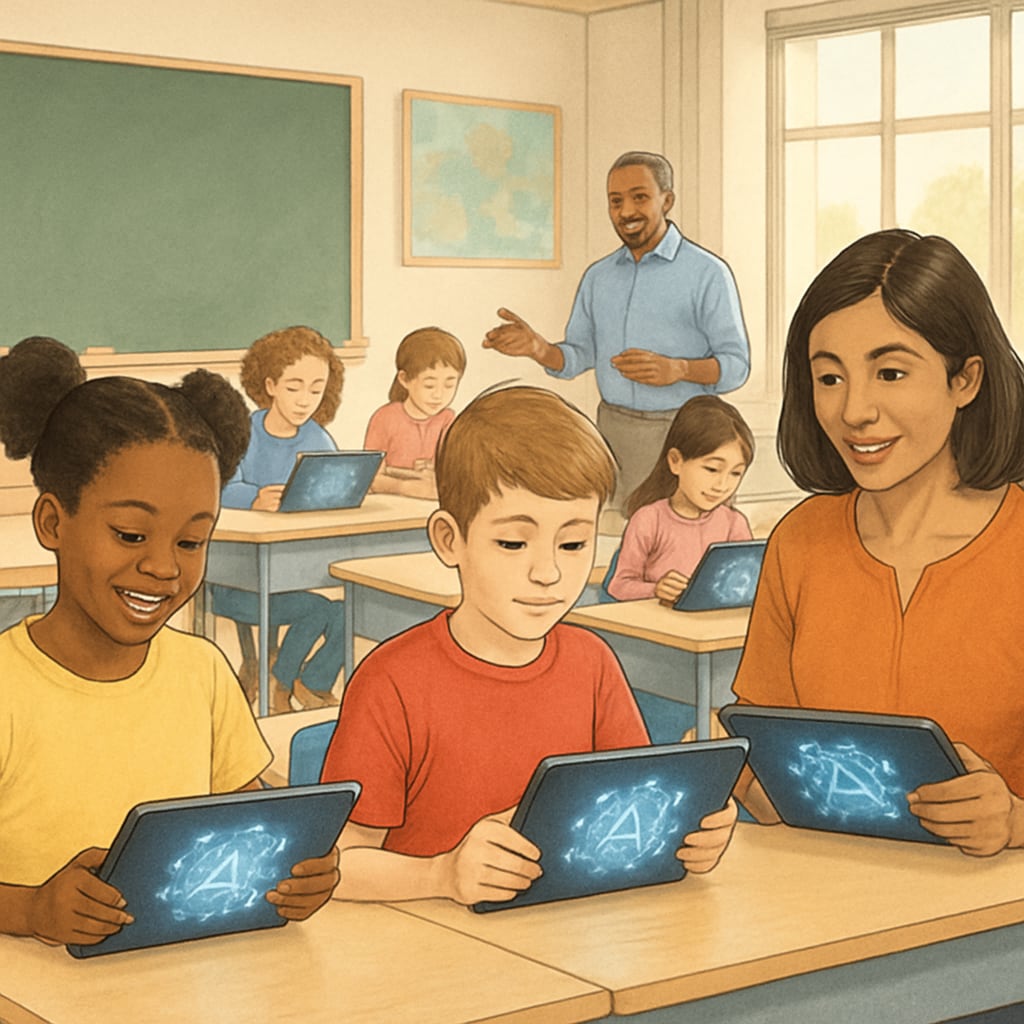In an era driven by technological innovation, the integration of artificial intelligence (AI) into educational settings is fundamentally reshaping how students learn and teachers teach. With tools like Google Gemini offering unprecedented capabilities in personalized learning, data analysis, and task automation, the teaching profession is under scrutiny as institutions weigh efficiency against the human touch. This raises critical questions about AI, teacher value, salaries, and the future of education.
The Role of AI in Revolutionizing Education
AI has already demonstrated its transformative potential across industries, but its impact on education is especially profound. Tools like Google Gemini deliver personalized learning experiences by analyzing individual student performance and tailoring lessons accordingly. Such systems can address gaps in understanding while scaling educational delivery, making them appealing to administrators seeking cost-effective solutions.
For example, AI-powered platforms can automate grading, generate lesson plans, and provide real-time feedback, tasks traditionally handled by teachers. While this improves efficiency, it also raises concerns about whether AI tools might devalue the role of educators who have historically served as mentors, motivators, and emotional support for students.

Teacher Value in an AI-Driven Classroom
As AI becomes more prevalent, the question of teacher value becomes increasingly relevant. Historically, teachers have played multifaceted roles—educators, counselors, and role models. However, the efficiency-driven mindset introduced by AI may emphasize measurable outcomes like test scores over intangible contributions such as emotional intelligence and interpersonal skills.
For instance, while AI can optimize the delivery of curriculum content, it is less adept at fostering critical thinking, creativity, and collaborative skills—areas where human teachers excel. Additionally, teachers are uniquely equipped to recognize and respond to the emotional needs of students, a dimension of education that AI cannot replicate.

The Impact on Salaries and Professional Status
One of the most contentious issues surrounding AI in education is its potential impact on teacher salaries. If AI tools can perform many teaching tasks at a fraction of the cost, institutions may feel incentivized to reduce teacher pay or hire fewer educators overall. This could lead to a reevaluation of salary structures, potentially undermining the financial stability of the teaching profession.
Moreover, the perception of teachers as indispensable professionals may shift if AI tools become integral to classroom operations. This could erode the status and respect traditionally associated with the role, making teaching less attractive to future generations.
Balancing Efficiency and Human Connection
While AI presents opportunities for enhanced efficiency, it is crucial to strike a balance between technological innovation and human connection. Education is not merely a process of information transfer; it is also a deeply human endeavor that shapes character, social skills, and emotional intelligence.
As administrators and policymakers consider integrating AI into classrooms, they must prioritize the preservation of teacher roles that emphasize these human qualities. Investments in professional development and AI literacy for teachers could empower them to work alongside AI tools rather than be replaced by them.
Conclusion: The future of education will likely involve a hybrid model where AI complements human teachers. However, the teaching profession must adapt to this paradigm shift to ensure its value is not diminished. By rethinking salary structures, professional development, and the role of educators within AI-driven classrooms, the education sector can leverage technology without sacrificing the human touch that defines great teaching.
Readability guidance: This article uses concise paragraphs, lists where applicable, and maintains an active voice to ensure clarity. Transition words like “however,” “for example,” and “in addition” are employed to facilitate smooth reading.


